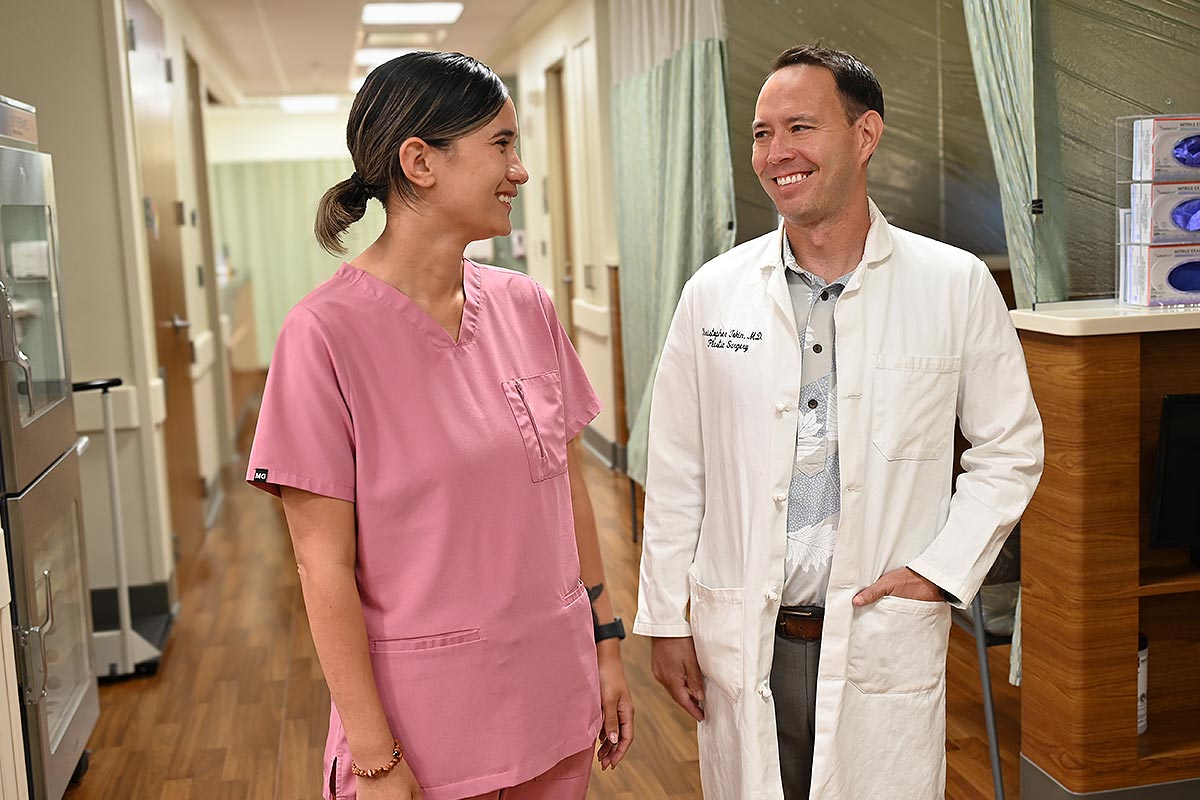
Common Questions About Breast Cancer Answered
Breast cancer is the most commonly diagnosed cancer among women in the United States, according to the American Cancer Society. The organization released a study earlier this year that revealed breast cancer is on the rise among Asian-American and Pacific Islander women.
“We know that Asian-American and Pacific Islander women have high incidences of breast cancer,” says Dr. Christopher Tokin, director of surgical oncology for Hawaii Pacific Health.
He notes that these women are also more likely to have dense breast tissue (more on that below).
“So, it is very likely someone you know will be diagnosed with breast cancer.”
As a surgical oncologist, Tokin specializes not only in diagnosing and treating cancer, but in performing mastectomies, breast conservation and breast reconstruction.
Tokin was born and raised in Honolulu. He is a Punahou School alumnus, completed medical school and surgical training on the mainland, and returned home to perform surgeries at Pali Momi Medical Center as well as Kapiolani Medical Center for Women & Children, where he was born.
To raise awareness during Breast Cancer Awareness Month, he answered questions about screenings and surgeries.
What is dense breast tissue? How common is it in Hawaii?
Density describes how breast tissue appears on a mammogram. The breast is made up of glandular ducts, stromal tissue and fat. Fat appears transparent, while glandular tissue appears dense. It typically decreases with age. Asian women are nearly two-thirds more likely to have dense breast tissue, so it’s very common in Hawaii.
While dense breast tissue is not abnormal, it is considered a risk factor for breast cancer, albeit a small component. Both dense tissue and cancerous growths appear white on mammograms, making it harder to detect breast cancer.
Are there any breast cancer symptoms people should be aware of?
Breast cancer is often asymptomatic, especially early on, and is not typically associated with pain. It can appear as a mass in the breast or armpit, a rash or infection that doesn’t go away or nipple discharge that is bloody. Any of these should be discussed with your doctor and warrants additional imaging.
What types of screenings are there?
A mammogram is an imaging procedure used for patients of normal and high breast cancer risk. An MRI can be an additional screening tool and is most useful for patients who have a known calculated high lifetime risk of breast cancer. Ultrasound is not used as a screening tool in the United States, but other countries have started to look at this technology.
What type of surgery should be considered for breast cancer patients?
In general, there are two types of surgery for breast cancer patients. Breast conservation refers to only removing part of the breast and includes a lumpectomy or partial mastectomy. A mastectomy refers to removal of the entire breast.
What should people know about breast reconstruction?
This is often referred to as oncoplastic surgery, where we use techniques typically used in plastic surgery to recreate the breast after a cancer surgery. Breast reconstruction recreates the mound on the chest wall. We can resize or reshape the breast and reposition the nipple.
Many patients hesitate to consider it because they are focusing only on the cancer or never thought implants are for them. We know that breast reconstruction is associated with improved quality of life, and because of this, it is a mandated covered benefit. Most of our breast cancer patients are long-term survivors, and making decisions like reconstruction up front, can help them live full and content lives.
What should people know about breast cancer and genetics?
Genetics likely play the most important role in a person’s risk of breast cancer. There are some identified genes that are passed down and can be tested for. There are others that have not been identified yet, so knowing your family history is even more important. Many breast cancer risk calculators can use it to estimate your risk without having a genetic test.
Better screening programs and more effective treatments mean better survival rates. The best thing you can do is make sure you do your regular screening. If breast cancer is caught early, it can be survivable.
This article was first featured in the Oct. 23, 2024, issue of MidWeek as a part of the “Dr. in the House” series. See the full publication.
Published on: October 30, 2024




